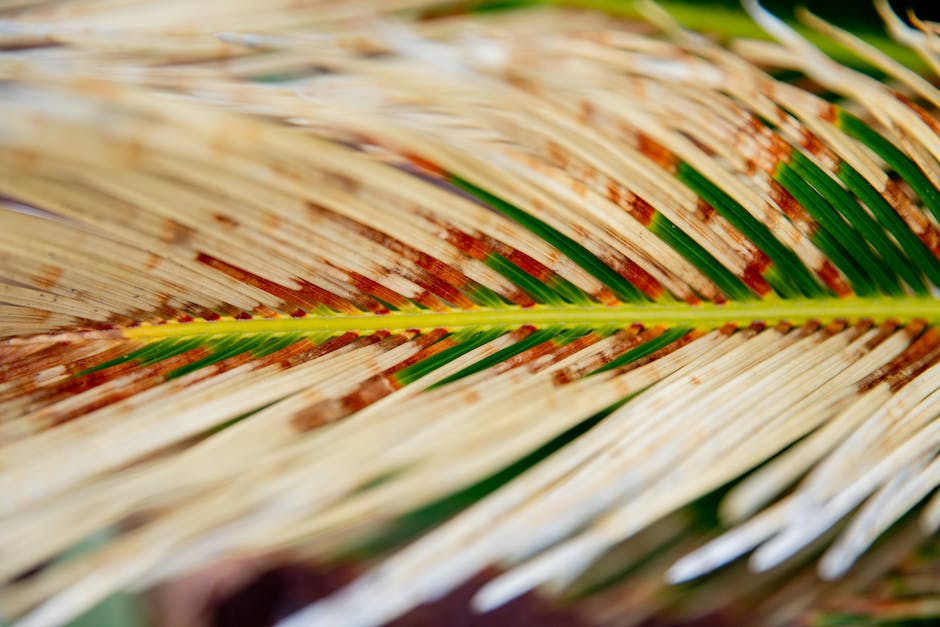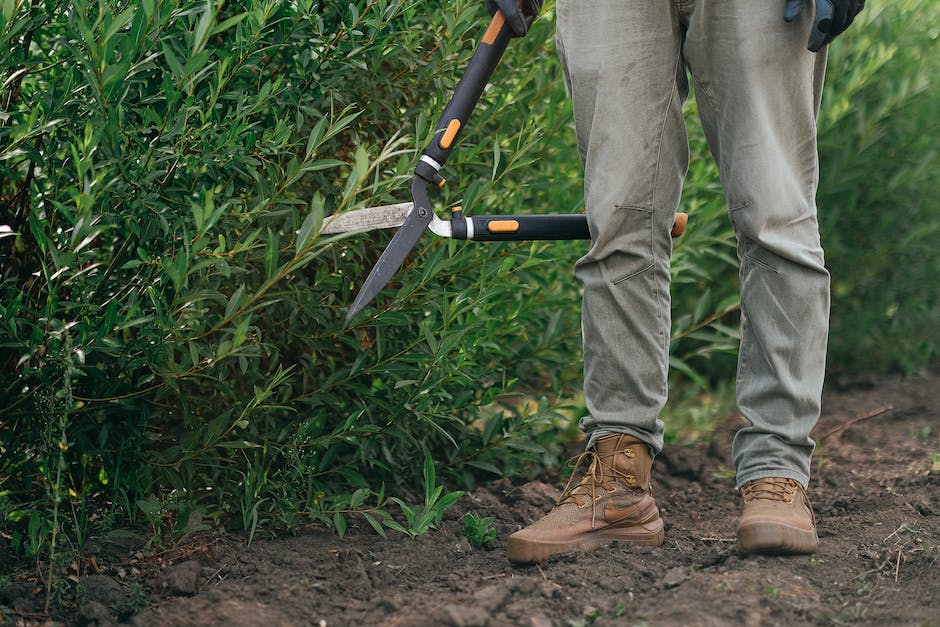Mastering the Art of Sago Palm Pruning

Welcome to an enlightening journey through understanding the natural architecture of the beautiful Sago Palm. A key focus in this informative tour is to comprehend the significant parts of a Sago Palm: the roots, fronds, and the crown. These pivotal components not only contribute to the plant’s distinct and attractive aesthetic but are fundamental to its health and vivacious growth. Equipped with this knowledge, we delve into the masterful methods and meticulous pruning techniques tailored expressly for the Sago Palm. Our journey ventures through the choice of tools and strategic cutting techniques, all designed to preserve and enhance the plant’s health while optimizing its appearance. We will amass a detailed roadmap on when and how these procedures should be done. Further down this path lies the crucial topic of post-trim care of our beloved Sago Palm, wherein we discuss the watering routines, signs of stress or disease, and when it’s sensible to plan the next pruning session.
Sago Palm Structure Understanding
The Structural Marvels of the Sago Palm – A Detailed Breakdown
When one embarks on the journey of botany, inevitably, they find themselves mesmerized by the Sago Palm. If you’re exploring this exotic cycad for the first time, you’re in for a treat. Within the world of plants, the Sago Palm possesses an intriguing blend of characteristics that make it truly distinctive. Today, we’ll draw back the curtain on the key structural elements that offer the Sago Palm its unique charm.
At first glance, the Sago Palm easily bears resemblance to both palms and ferns – an idiosyncrasy considering it belongs to neither family. This initially perplexing identity is partly due to its appealing fronds, which sprout in beautiful, deep green spirals from the crown. Every leaf, sharp-tipped with a leathery texture, adds a touch of bonafide tropical aesthetic to your garden.
No conversation about the Sago Palm’s structure can ignore its robust, shaggy trunk. Resilient and firm, the trunk often trickles upwards in an inviting, light brown hue, bulging at the base and narrowing down towards the apex. It serves as a visual testament to the tree’s unparalleled strength. Embedded in the trunk, bang in the center, is the Sago Palm’s crown shaft – the birthplace for the cycad’s nascent fronds.
Then, there’s the Sago Palm’s lifeline – its roots. The strong, wiry roots cling to the earth with tenacity seldom seen in other plants. They delve deep into the earth, extracting nutrients to support the life above.
For those familiar with a botanist’s lens, the reproductive structure of the Sago Palm stands out as a significant curiosity. The plant is dioecious, meaning male and female reproductive structures exist separately on different plants. Male sago palms sprout elongated, golden cones, while their female counterparts produce a flatter, feather-like structure, almost reminiscent of a cabbage. The unexpected differences in their cones make gender identification an intriguing process.
From the summit of its slow-growing fronds to the extent of its undaunted roots, each structural detail of the Sago Palm serves a specific purpose, contributing to the plant’s overall resilience and distinctive aesthetics. It is a sturdy testament to millions of years of evolution and adaptation, presenting us with a tangible snapshot of botany’s unparalleled beauty.
Unlocking the key structural elements of Sago Palm opens up a new world of appreciation for any hobbyist. Knowledge of these vital characteristics is the first step towards fostering these wonderful cycads in your plant collection. So, the next time you find yourself taken in by the charm of a Sago Palm, take a moment to acknowledge these fascinating structural details – after all, it’s these elements that give the Sago Palm its resilient nature and unique allure. Starting today, each gaze at this enchanting cycad should be much enriched through an understanding of its form and function. Happy botanizing!

Pruning Techniques for Sago Palm
The Finer Points of Pruning Your Sago Palm
For those who have found a love for botanical beauty, the joys of nurturing a Sago Palm can be immensely satisfying. Not only are they aesthetically impressive, but the ins and outs of their careful maintenance can lead to a flourishing hobby in and of itself. In the process of cultivating these tropical marvels, mastering effective pruning techniques is paramount to ensure the longevity and health of your Sago Palm.
Timing your pruning right is the first rule of thumb. The late winter or early spring sends the Sago Palm into a refreshing growth phase, making it prime time to snip away the dead and disfigured fronds. However, caution is preferred, only remove fronds that are completely brown. Green fronds, even if half-brown, contribute to photosynthesis and should be left intact.
Understanding the growth habit of Sago Palms leads to efficient pruning. The circular rosette growth pattern means that fronds are frequently renewed from the center, pushing older ones outward. Individuals who know this fact can make the most out of pruning season, trimming older fronds and making space for new additions.
Exercise caution while pruning. Wearing gloves and using the correct tools such as sharp, clean shears and pruners is a must. In addition, avoid pulling out fronds with force as it may damage the crown shaft, the lifeline for frond growth. A gentle approach will not only prevent injury to your plant but also to you, as the Sago Palm’s fronds are armed with sharp spikes.
Proper disposal of cut fronds is also crucial, as festering piles can become a breeding ground for pests and diseases which can then affect your plant’s hardy trunk and tenacious roots. To go a step further, you can mulch and compost the clippings, turning them into organic matter that feeds back into the plant’s growth cycle.
Now, a noteworthy point is the gender aspect of these plants. If your Sago Palm is male, you may notice a cone-like structure emerging from the center during the reproductive phase. Trimming this before it ripens will encourage more frond growth rather than exhausting the plant’s energies on seed production.
In conclusion, while the rigid, spiky fronds might seem intimidating, pruning is not something to shy away from. Having direct interaction with your Sago Palms in this way deepens your understanding of botany, enhances your gardening skills and, ultimately, allows your plants to thrive. Armed with this knowledge and a pair of shears, you’ll find pruning your Sago Palms more than just a maintenance routine – it’s an enriching experience, one that brings closer to scent of earth and nature’s grand design.

Sago Palm Health Maintenance
Unveiling the Pure Elegance of Sago Palms: Pruning and Aftercare
Maintaining the beauty of your Sago Palm is indeed a rewarding journey. Pruning plays a significant role in ensuring the plant’s overall longevity, health, and aesthetic appeal. The anticipation of waiting for the perfect time, paired with the meticulous care put into choosing which fronds to trim, reveals the ardent botany enthusiast within us all.
To maintain the timeless grandeur of the Sago Palm, it’s essential to understand that pruning relies heavily on impeccable timing. The best time to prune is late winter or early spring, just before the new frond growth begins. This timing allows for the removal of old, bushy fronds and gives space and energy for the emergence of new ones.
It might be tempting to give your Sago Palm a radical haircut, but it’s crucial to keep a gentle hand and discern eye. Focus on removing only those fronds that are yellow, brown, or beset with pests. Moreover, keep an eye on the lower fronds as they age faster and are more likely to turn colorless. Leave the healthy green fronds alone as they are the Palm’s powerhouse for photosynthesis and crucial for its overall health and growth.
Knowledge of the Sago Palm’s growth habit is pivotal. They grow symmetrically with a rosette pattern of fronds radiating outward. Keeping this pattern in mind while pruning will promote a balanced, attractive growth. A tidily pruned Sago Palm is not only beautiful to behold; it’s also a sign of a thorough understanding of the plant’s growth pattern – an achievement for any budding botanist.
Decent care should be taken during pruning, as Sago Palms have sharp edges which can cause unpleasant cuts. Wear gloves and long sleeves to protect your skin. Moreover, the dust from cut fronds can irritate the eyes and lungs, so consider wearing safety glasses and a dust mask.
After pruning, the cut fronds should be properly disposed of, away from other plants. The trimmed fronds might contain pests or disease-causing pathogens. If left nearby, they pose a risk of infestation or infection to other plants.
Pruning male Sago Palms during their reproductive cycle deserves special mention. If the plant is flowering, remove the blossoms as they drain energy from the plant. This keeps the palm healthier and stimulates frond growth.
Further, pruning isn’t just about plant health – it’s a hands-on approach for botany enthusiasts to deepen their understanding of plant structures, growth patterns, and care regimens. Moreover, it helps heighten gardening skills, making it an integral part of this engaging hobby. Enthusiasts will doubtlessly find joy and satisfaction in carefully guiding the growth of their garden gem, the Sago Palm.

By elucidating the structure, importance, and contribution of each key component of the Sago Palm, we have underscored the critical role of comprehensive knowledge before embarking on the trimming exercise. It is equally significant to implement strategic pruning techniques while safeguarding the plant’s health and aesthetics at all times. As our foray into the world of Sago Palm concludes, we take with us some treasured lessons in effective aftercare. From perfected watering routines to the ability to identify potential stress indicators and the appropriate timing for subsequent pruning sessions, we have mastered how to maintain and enhance a Sago Palm’s health and beauty. Remember, a well-informed Sago Palm pruner is a successful one, and success ensures vibrant and thriving plants.



